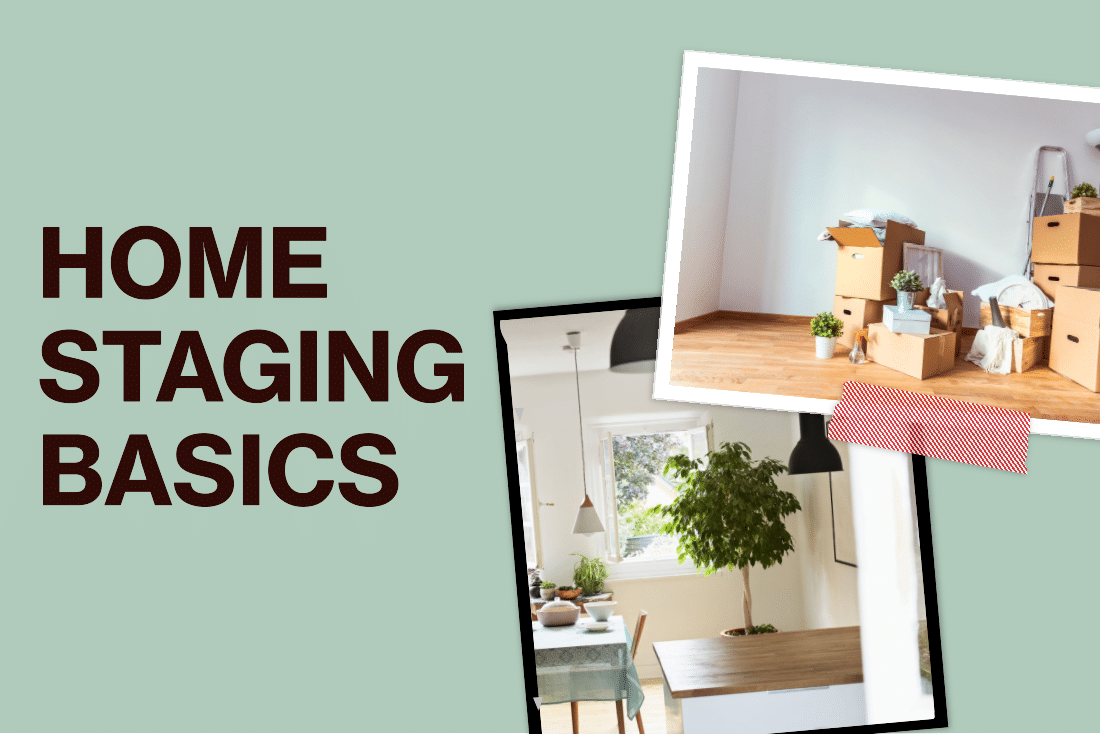
Home Staging Basics: Master Transforming Your Space
Welcome, aspiring home stagers! Ready to master the art of transforming your space and send potential buyers into a frenzy of desire? You’ve come to the right place. Home staging is more than just a fancy buzzword in today’s cutthroat real estate market – it’s an absolute must.
You may be wondering why home staging has become so crucial. Well, picture this: a buyer walks into a home filled with clutter, outdated furniture, and, let’s not forget, the lingering scent of last night’s fish dinner. Not exactly love at first sight, right? Now, imagine the same home after it’s been staged to perfection, showcasing a clean, inviting, and stylish space. Like magic, you’ve turned that first scenario into an HGTV-worthy fantasy. That’s the power of home staging.
Staging your home comes with a myriad of benefits. First and foremost, you’ll attract more potential buyers who are itching to envision their lives within your walls. Next, your home will likely sell faster since a well-staged space stands out among the sea of other homes on the market. And if that’s not enough, you might even snag a higher sale price! Talk about a win-win-win.
Home Staging Basics: Understanding Your Target Audience
Now, let’s move on to the nitty-gritty of home staging: understanding your target audience. After all, no two potential buyers are created equal. To woo them successfully, you need to do a little bit of homework. So, grab a magnifying glass and your best Sherlock Holmes hat because it’s time to play detective.
Researching Your Target Audience
Start by researching your local demographics. Are young families flocking to your neighborhood? Are retirees on the hunt for their dream home? Or perhaps it’s the ambitious career-minded individuals seeking a stylish abode. Knowing the makeup of your potential buyers will help you tailor your home staging to their specific tastes and preferences.
Identifying Key Features
Next, identify the key features buyers in your area are looking for. For example, if you’re targeting families, a well-appointed playroom or ample outdoor space might be high on their wish list. Retirees may appreciate a low-maintenance yard, while career-driven individuals could be on the lookout for a sleek home office. Whatever the preferences may be, knowing these sought-after features will give you an edge in the staging game.
Appeal To Your Target Audience
Finally, it’s time to tailor your staging to appeal to your target audience. Think of it as a form of real estate matchmaking. You want to create that irresistible spark between the buyer and your home. Transform the space in a way that highlights those desirable features, caters to your audience’s tastes, and makes them feel right at home.
Whether it’s a cozy reading nook for the book-loving couple or a top-notch kitchen for the budding chef, your goal is to showcase your home’s best assets in a way that speaks to your audience’s hearts – and wallets.
Congratulations! You’ve now laid the groundwork for a successful home staging journey. Remember, the key is understanding your target audience, and with this knowledge, you can create a space that’s equal parts clever, humorous, and educational – just like this blog post. Stay tuned as we dive deeper into the art of home staging and share our best tips and tricks for transforming your space into a buyer’s dream come true.
Home Staging Basics: The Principles
Alright, future home staging virtuoso, now that you know your target audience, it’s time to dive into the principles that’ll turn your space from drab to fab. Just like an expertly baked cake, home staging is all about getting the right mix of ingredients – decluttering, depersonalizing, and maximizing natural light and space. Ready to whip up a masterpiece? Let’s get started.
Decluttering
First up, decluttering. Think of clutter as the spinach stuck between your teeth during a first date – it’s distracting and leaves a less-than-stellar impression. That’s why a clean and organized space is crucial when staging your home. Potential buyers want to walk into a breath of fresh air, not a labyrinth of knick-knacks and piles of unopened mail.
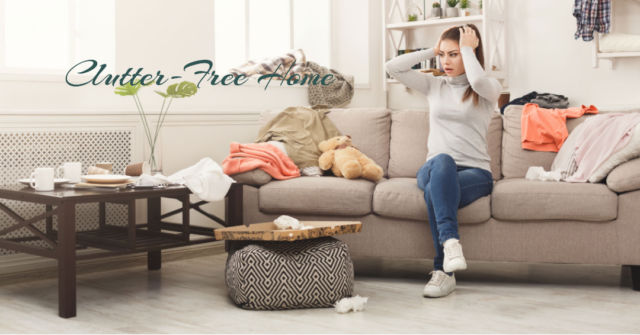
So, how do you declutter like a pro? Here are a few tips:
- Channel your inner Marie Kondo and ask yourself if each item in your home “sparks joy.” If not, it’s time to let it go.
- Make three piles: keep, donate, and toss. Be ruthless in your decision-making, and remember, less is more.
- Organize what’s left in a neat and visually appealing way. Use storage solutions to keep things tidy and out of sight.
Depersonalizing
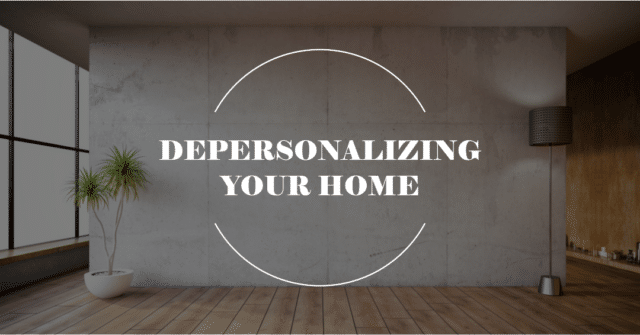
Next on the menu is depersonalizing. While your collection of porcelain cats or Star Wars memorabilia may be your pride and joy, creating a neutral space where potential buyers can envision their lives unfolding is essential. To do this, try these strategies:
- Remove family photos, trophies, and personal mementos. Replace them with simple, neutral artwork or decorative items.
- Paint over bold or highly specific colors with more neutral shades, like soft grays, beiges, or off-whites.
- Take down any polarizing or controversial items that could alienate potential buyers.
Maximizing Natural Light and Space
Finally, let’s talk about maximizing natural light and space. A well-lit, open space is like a warm hug that invites potential buyers to stay awhile. To achieve this effect, consider these techniques:
- Swap heavy, dark curtains for light, sheer ones that allow sunlight to filter through.
- Use mirrors strategically to reflect light and create the illusion of more space.
- Rearrange furniture to open up the room and ensure clear, unobstructed walkways.

By following these three essential home staging principles, you’ll be well on your way to creating a space that’s as dazzling as it is inviting. Stay tuned for more tips and tricks to become the ultimate home staging maestro. And remember, a well-staged home is like the secret sauce to winning over potential buyers – equal parts clever, humorous, and educational.
Home Staging Basics: Enhancing Curb Appeal
Now that you’ve mastered the art of decluttering, depersonalizing, and maximizing natural light, it’s time to step outside and tackle the first impression your home makes. That’s right; we’re talking about curb appeal. Because let’s face it, even if your home’s interior looks like it belongs on the cover of a magazine, a shabby exterior will make potential buyers think twice.
The Impact of First Impressions
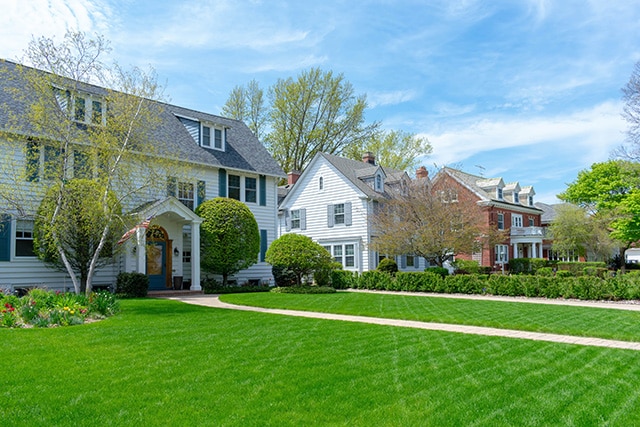
You might have heard the saying, “You never get a second chance to make a first impression,” and that statement couldn’t be more accurate when it comes to home staging.
The moment potential buyers pull up to your property, their minds start to form an opinion about your home. That’s why enhancing curb appeal is so vital – it sets the stage for the entire viewing experience.
Additionally, a visually appealing home may stand out in buyers’ minds when compared to other properties on the market, giving you a competitive edge. In short, investing time and effort into enhancing your home’s curb appeal can pay off in spades when it comes to attracting potential buyers and making your home stand out in the real estate market. So, roll up your sleeves and give your home the red carpet-worthy entrance it deserves!
Landscaping Tips to Improve Curb Appeal
To start, let’s focus on landscaping. After all, a well-tended garden is like a fabulous pair of earrings – it completes the look.
Here are some tips to take your yard from “meh” to “wow”:
- Mow the lawn regularly and trim any overgrown shrubs or bushes.
- Plant colorful flowers or add potted plants to create visual interest and charm.
- Mulch flower beds to keep weeds at bay and give a polished appearance.
Exterior Maintenance and Repairs to Consider
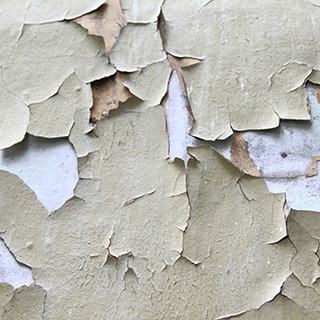
Next, let’s dive into exterior maintenance and repairs. Because, let’s be honest, nobody wants to buy a home that’s falling apart. Consider the following:
- Touch up peeling or chipped paint on siding, trim, and doors.
- Replace any broken or missing roof tiles, gutters, or shutters.
- Pressure wash sidewalks, driveways, and siding to remove dirt and grime.
Home Staging Basics: Focus on Key Rooms
With your home’s exterior looking like it’s ready for the red carpet, let’s head back inside to focus on key rooms. When it comes to staging, certain spaces pack more punch than others. So, without further ado, let’s unveil the home staging VIPs: living room, kitchen, master bedroom, and bathrooms.
Living Room
A well-staged living room should feel like a warm embrace. To achieve this, arrange furniture in a conversational layout, and add cozy touches like plush throw pillows and soft blankets.
Kitchen
The kitchen is the heart of the home, so make sure it shines. Clear countertops of clutter, add fresh fruit in a decorative bowl and consider updating hardware or lighting fixtures for a modern touch.
Master Bedroom
Ah, the master bedroom – a sanctuary where weary buyers can imagine resting their heads. Create an inviting atmosphere with a neatly made bed, fluffy pillows, and soothing colors.
Bathrooms
Finally, bathrooms should feel like a spa retreat. Display clean, neatly folded towels, add a scented candle and ensure surfaces are spotless and free of personal items.
Armed with these tips and tricks, you’re well on your way to staging stardom. Remember, the key to successful home staging lies in the details – a clever combination of curb appeal, key rooms, and your newly acquired expertise. Happy staging!
Home Staging Basics: Furniture and Decor Selection
Let’s turn our attention to the finer points of home staging – furniture and decor selection. Think of this as the cherry on top of the home staging sundae. A well-dressed space looks great and can help potential buyers visualize themselves in the home. Ready to channel your inner interior designer? Let’s dive in!
Choosing Neutral Colors
When it comes to color, aim for neutral and universally appealing hues. Just as a versatile blazer can take you from day to night, a neutral palette can work wonders for your space. Soft grays, beiges, and off-whites are always a safe bet, providing a clean, polished backdrop for any style.
Furniture
Next, let’s talk furniture. The key here is selecting pieces that complement the size of each room. A giant sectional in a small living room is about as practical as a tuxedo on a beach vacation – it just doesn’t work. Opt for furniture that fits the space comfortably without overwhelming it, and remember that less is often more.
Subtle, Stylish Accessories
Now for the pièce de résistance: subtle, stylish accessories. This is your chance to showcase your home’s personality while still keeping things neutral. Think textured throw pillows, sleek vases, and eye-catching artwork that adds visual interest without overpowering the room.
Home Staging Basics: Lighting and Ambiance
With furniture and decor on point, let’s shed some light on lighting and ambiance. Proper lighting is like the perfect selfie filter – it can make everything look better. So, don’t overlook this essential aspect of home staging.
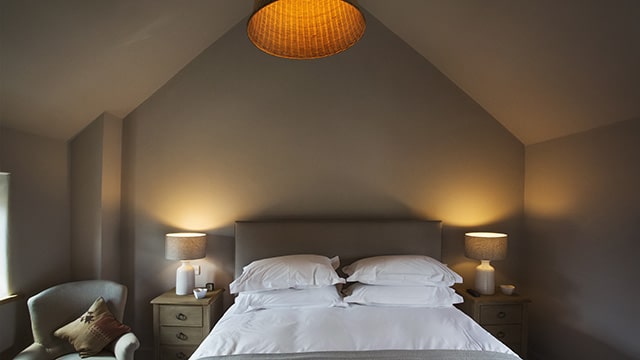
Types of Lighting
There are three types of lighting to consider when setting the stage for success: ambient, task, and accent.
Ambient lighting provides overall illumination (think ceiling fixtures), while task lighting focuses on specific areas for activities like reading or cooking. Accent lighting, on the other hand, is all about highlighting architectural features or artwork.
Create a Welcoming Atmosphere
To create a welcoming atmosphere, layer these types of lighting and use dimmer switches to adjust brightness as needed
Home Staging Basics: Professional vs. DIY
So, you’ve been armed with a plethora of home staging knowledge, and now you face the big question: should you hire a professional home stager or channel your inner HGTV star and go the DIY route? Fear not, intrepid homeowner; we’re here to help you weigh the pros and cons.
Benefits of a Professional Home Stager
On the one hand, hiring a professional home stager can be a game-changer. Think of them as the fairy godmother of real estate – with a wave of their wand (or, you know, years of experience); they can transform your space into a buyer’s dream.
A professional stager knows what sells and can provide an unbiased perspective to highlight your home’s best features. However, this expertise comes at a cost, which might not be within every homeowner’s budget.
DIY
If you’re up for the challenge and looking to save some dollars, DIY home staging might be right up your alley. With all the tips and tricks you’ve learned so far, you’re already off to a great start. Just remember to keep a keen eye on details, and don’t be afraid to ask for opinions from friends or family.
Weighing the Pros and Cons
When it comes down to it, the choice between professional staging services and DIY home staging will depend on factors like your budget, time constraints, and level of confidence in your design skills. The key is to find the best option for your unique situation and make your home shine, one way or another.
Home Staging Basics: Staging on a Budget
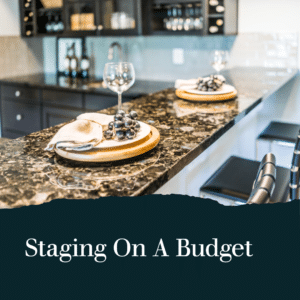
Speaking of budgets, let’s talk about staging on a shoestring. Transforming your home doesn’t have to break the bank. In fact, there are plenty of cost-effective ways to put your best foot forward when staging.
Repurpose Existing Furniture
First, consider repurposing existing furniture and decor. Sometimes, all it takes is a fresh coat of paint, a strategic rearrangement, or a well-placed accessory to breathe new life into a space. Look around your home for items you can use to spruce things up without spending a dime.
Affordable Home Improvements
Next, tackle affordable home improvement projects that pack a punch, like painting walls, replacing dated hardware, or installing a new light fixture. Small updates can make a big difference in the overall appearance of your home.
Finding Budget-Friendly Staging Items
Lastly, keep an eye out for budget-friendly staging items. Scour local thrift stores, discount retailers, or even neighborhood garage sales for affordable finds that can add a touch of style to your space without breaking the bank.
Remember, home staging doesn’t have to cost a fortune. With some creativity and a keen eye for design, you can make a big impact, even on a limited budget. Now go forth and conquer the world of home staging, and prepare to watch potential buyers swoon over your fabulously staged space.
Home Staging Basics: Final Thoughts
And there you have it, dear reader – your ultimate guide to mastering the art of home staging! You’ve learned the importance of understanding your target audience, the principles of decluttering, depersonalizing, and maximizing natural light, as well as enhancing curb appeal and focusing on key rooms.
You’ve explored the world of furniture and decor selection, the magic of lighting, and the pros and cons of hiring a professional stager versus going DIY
And, of course, you’ve discovered the beauty of staging on a budget. Now, armed with all this knowledge, it’s time to roll up your sleeves, channel your inner design guru, and transform your space into a buyer’s dream.
Don’t underestimate the power of a well-staged home. At OKCHomeSellers at McGraw Realtors, we understand the impact of home staging. We can provide you with valuable advice or connect you with a trusted expert to help you prepare your home for sale. Contact us today to learn how we can help you get top dollar for your property.
Luxury Specialist at McGraw Realtors
With a diverse background, including a career as an Air Force fighter pilot and entrepreneurship, Bill transitioned to real estate in 1995. Co-founding Paradigm Realty with his wife, Charlene, he quickly rose to prominence in Oklahoma City’s luxury real estate scene. Now, as one of the top agents with annual sales surpassing $20 million, Bill’s dedication to exceptional service remains unparalleled. With a legacy spanning over two decades in the industry, Bill’s expertise and commitment make him a trusted name in luxury real estate.